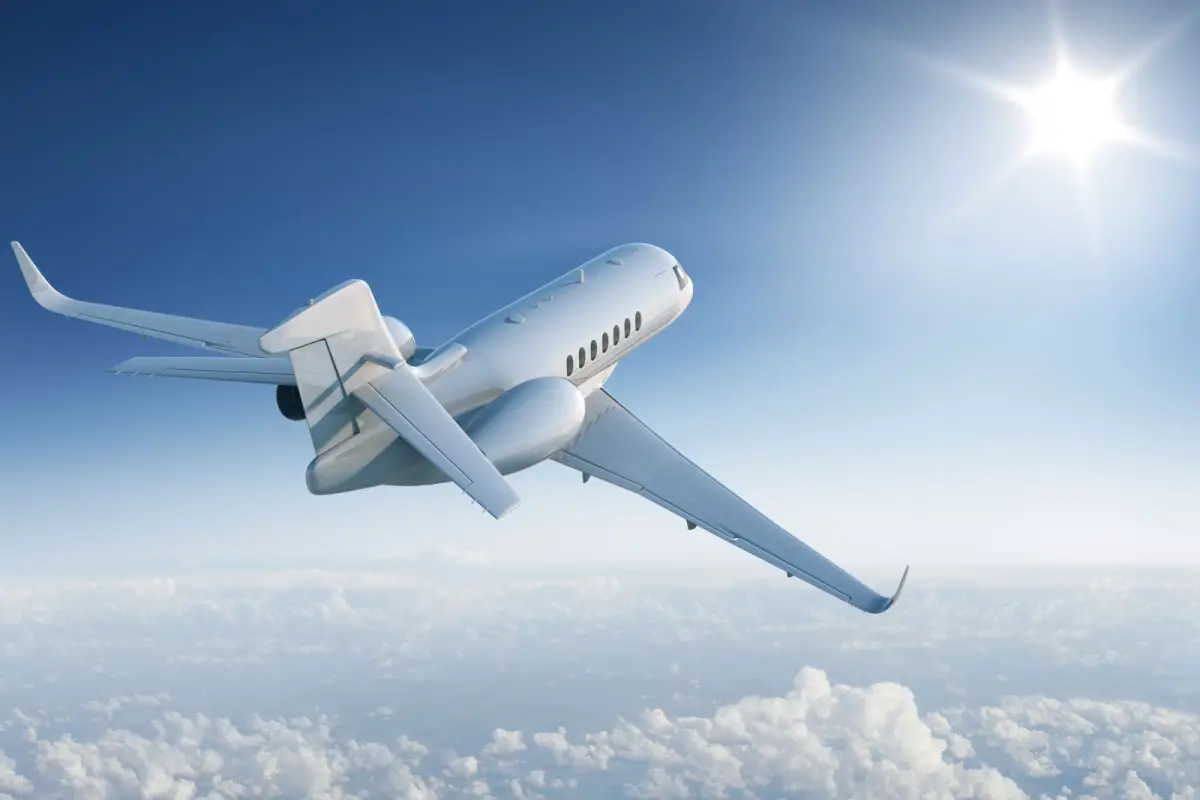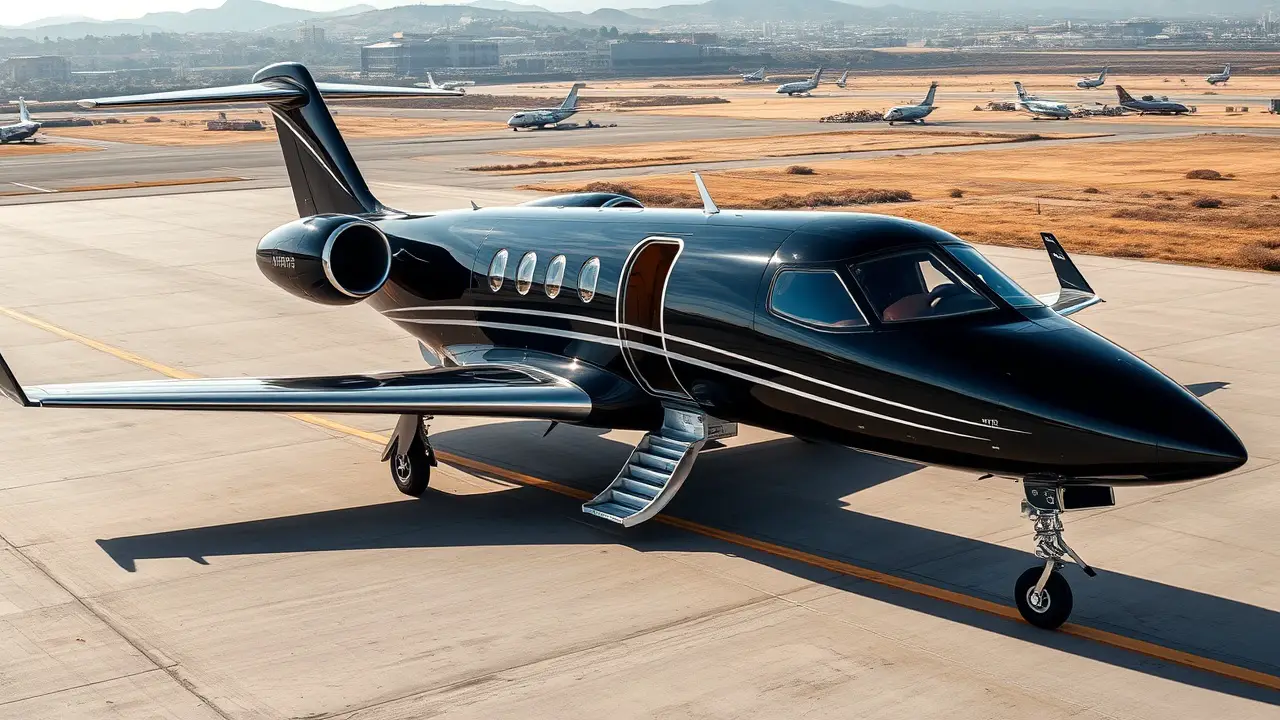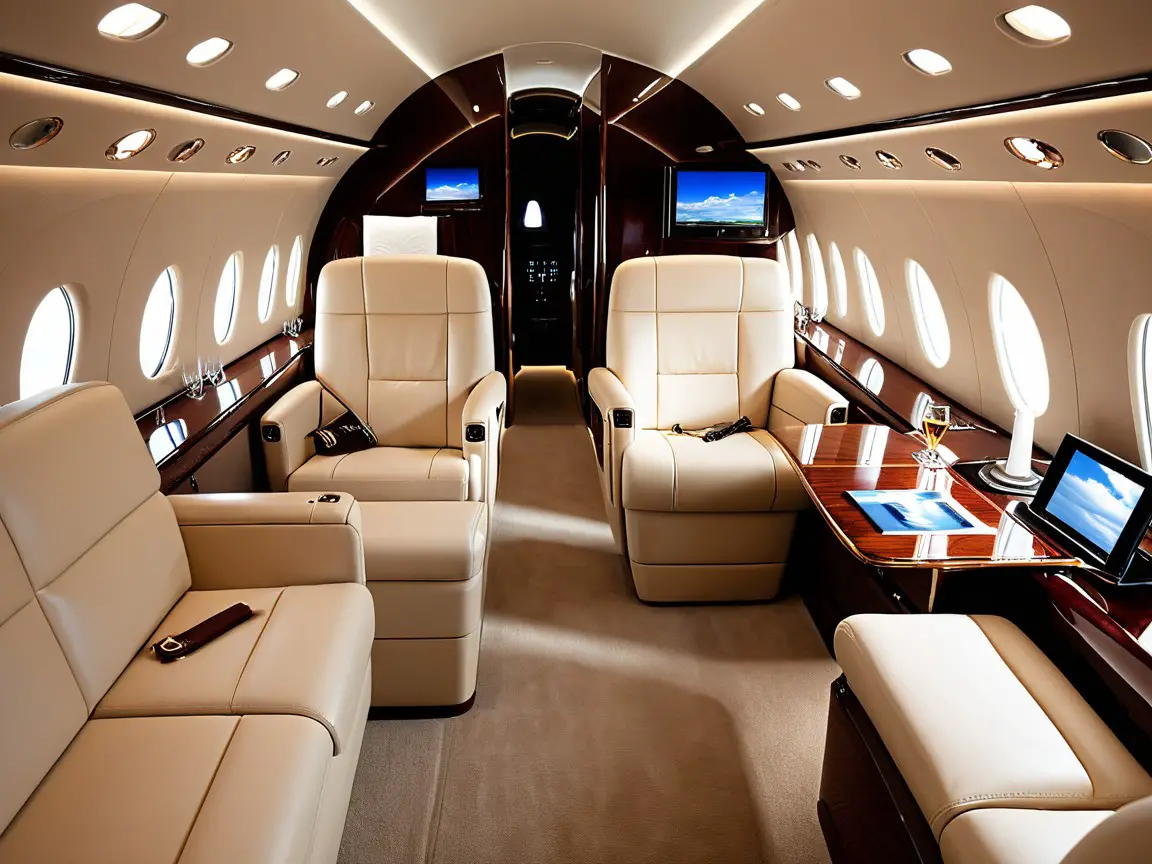Choosing the right private jet cruising altitude can make all the difference during flight, the higher private jets go and maintain there altitude the better.
Private jets typically cruise at altitudes ranging from 30,000 to 45,000 feet, offering speed, efficiency, and smoother flights above commercial air traffic.
Contents
It’s not just about reaching a certain height; it’s about optimizing the flight experience and efficiency for private jet travelers.
The private jet cruising altitude refers to the specific level at which these luxurious aircraft navigate through the skies, away from commercial air traffic and airliners.
Finding that perfect cruise altitude is crucial. It affects everything from air speed and fuel consumption to passenger comfort and overall travel time.
Pilots carefully consider factors such as weather conditions, air traffic congestion, and aircraft capabilities to determine the ideal cruising altitude for each flight.
By soaring above the clouds at their designated altitudes, private jet passengers enjoy smoother rides, reduced noise levels, and breathtaking views that commercial planes simply can’t match.
In this comprehensive guide on private jet cruising altitude, we’ll delve into why it matters so much for your private jet charter experience.
We’ll explore how different altitudes impact various aspects of your flight, from cabin pressure to fuel efficiency.
So buckle up as we take you on a high-flying journey through the world of private jet cruising altitudes.
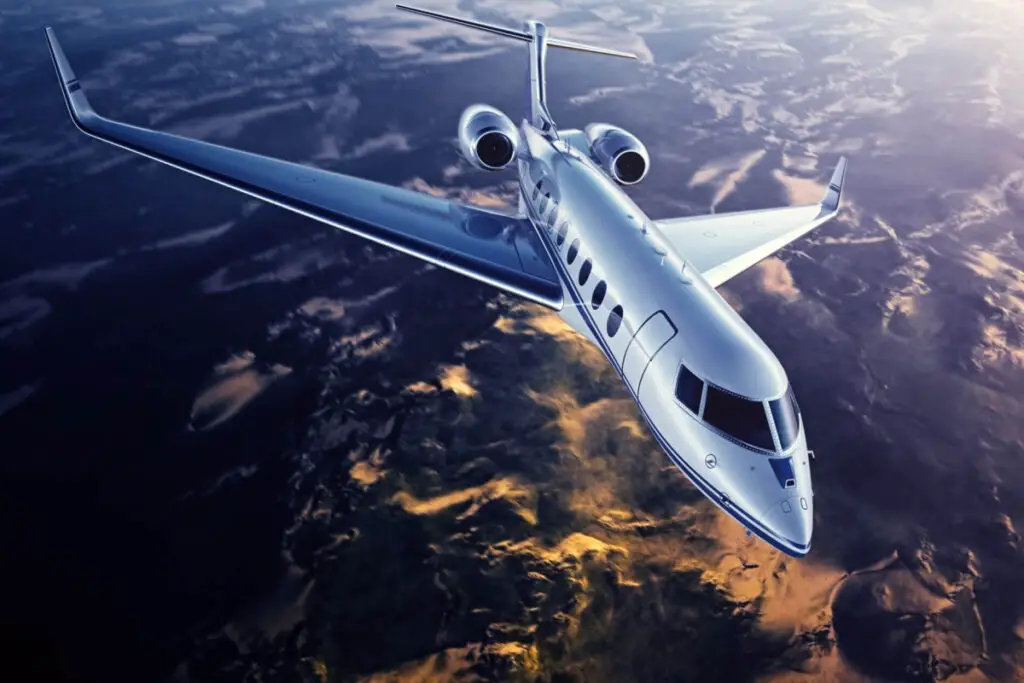
Benefits of Private Jet Cruising Altitude
Flying in a private jet at higher cruising altitudes comes with several advantages. One major benefit is the smoother flight experience it offers.
When a private jet reaches its optimal cruising altitude, it glides above most weather disturbances, resulting in reduced turbulence.
This means passengers can enjoy a more comfortable journey without the constant bumps and jolts that can be experienced at lower altitudes.
- Less turbulence leads to a more relaxed and enjoyable flight.
- Passengers can move around the cabin freely without worrying about sudden movements or discomfort.
- It allows for a peaceful and uninterrupted travel experience, especially for those who may be sensitive to motion sickness.
Improved Fuel Efficiency
Private jets are designed to operate efficiently at specific altitudes. By flying at their optimal cruising altitude, these aircraft can achieve improved fuel efficiency.
When an aircraft reaches its ideal height, it experiences less air resistance, allowing it to consume less fuel while maintaining its speed.
- Enhanced fuel efficiency translates into cost savings for private jet owners.
- Lower fuel consumption also reduces carbon emissions, contributing to a greener environment.
- The ability to fly farther distances without refueling opens up more travel possibilities for passengers.
Enhanced Privacy and Exclusivity
Another advantage of flying at higher altitudes in a private jet is the enhanced privacy and exclusivity it offers.
Private jets provide an intimate setting where passengers can enjoy their journey away from prying eyes.
When cruising at higher altitudes, there is minimal interaction with commercial airliners or other aircraft, ensuring a more secluded experience.
- Passengers have the freedom to relax and unwind without distractions from other travelers.
- Confidential business discussions or personal conversations can take place without concerns about eavesdropping.
- The exclusivity of flying privately adds an element of luxury and prestige to the overall travel experience.
Avoidance of Congested Airspace and Direct Routes
Flying at higher altitudes allows private jets to navigate more direct routes and avoid congested airspace.
Commercial airlines often follow predetermined flight paths, leading to potential delays due to air traffic congestion.
Private jets, on the other hand, have the flexibility to choose more efficient routes, resulting in faster travel times.
- Avoiding crowded airspace reduces the likelihood of encountering delays.
- It enables passengers to reach their destination quicker, saving valuable time.
- The ability to take direct routes also minimizes the need for layovers or connecting flights.

Comparison: Private Jet Cruising Altitude vs Commercial
Private jets and commercial airliners may both take to the skies, but there are some key differences. Let’s explore the variation in altitude between private jets and commercial flights.
Private Jets Can Fly at Higher Altitudes Compared to Commercial
One significant advantage of private jets is their ability to soar at higher altitudes than commercial airliners.
While commercial flights typically fly at lower altitudes due to air traffic congestion, private jets have more freedom in choosing their cruising altitude.
Commercial Flights Often Fly at Lower Altitudes Due to Air Traffic Congestion
Commercial airlines often find themselves navigating through a crowded sky filled with other aircraft.
To ensure safety and maintain efficient air traffic control, these planes tend to fly at lower altitudes where they can stay within designated flight paths.
Private Jet Passengers Experience Less Noise, Better Views, and a More Comfortable Journey at Higher Altitudes
When flying high in the sky on a private jet, passengers enjoy several benefits that come with higher altitudes.
Firstly, noise levels are significantly reduced compared to commercial flights, making for a quieter and more peaceful journey.
This allows passengers to relax or engage in conversations without the constant hum of engines.
The views from above are simply breathtaking.
As private jets cruise at higher altitudes, passengers can witness stunning vistas of clouds, landscapes, and even celestial phenomena like sunsets or starry nights.
The experience is akin to floating amidst the wonders of the world.
Moreover, flying higher also contributes to a smoother ride as private jets encounter fewer weather disturbances such as turbulence.
Passengers can enjoy a more comfortable journey without constant jolts or bumps along the way.
Flexibility in Choosing the Most Suitable Cruising Altitude Based on Individual Needs with Private Jets
Unlike commercial airliners that must adhere to specific flight paths and predetermined cruising altitudes, private jets offer flexibility in choosing the most suitable altitude based on individual needs.
This level of customization allows for a more tailored and personalized travel experience.
Passengers can opt for higher altitudes to minimize air traffic congestion, enjoy smoother flights, and relish panoramic views.
On the other hand, they may choose lower altitudes to take advantage of specific routes or avoid adverse weather conditions.
The ability to adapt cruising altitudes adds an extra layer of convenience and comfort for those traveling by private jet.
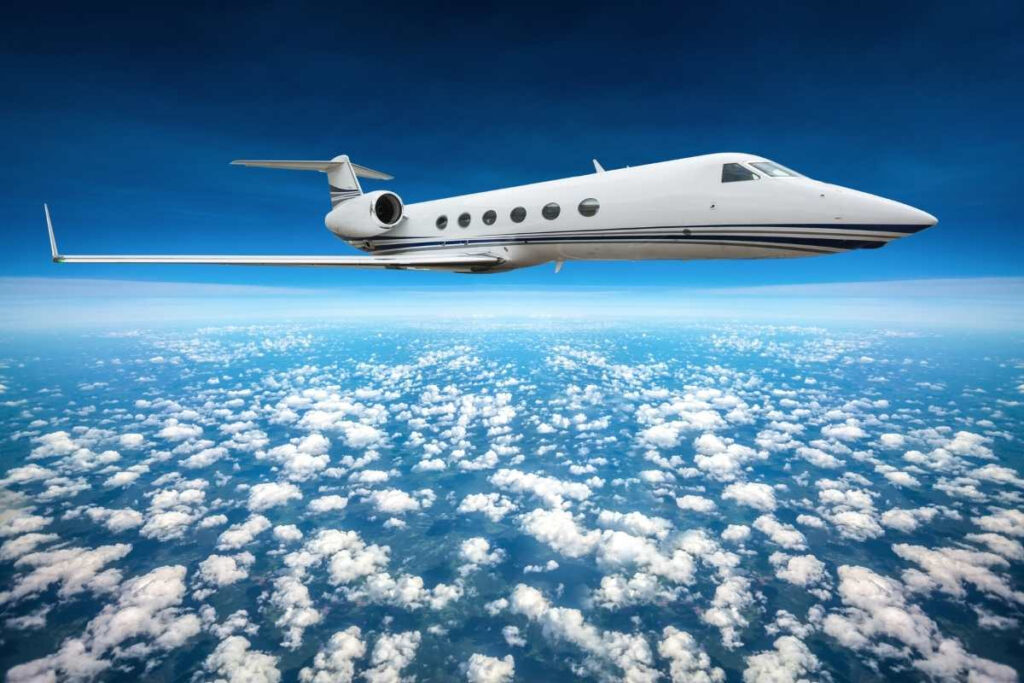
Private Jet Cruising Altitude: Why Fly At Higher Altitudes?
Flying at higher altitudes in a private jet has its perks. Let’s take a closer look at why flying at higher altitudes is preferred by luxury travelers.
Faster Travel Times
One of the main reasons private jets fly at higher altitudes is to reduce travel time.
When cruising at higher altitudes, there is less air resistance, allowing the aircraft to move faster through the sky.
It’s like riding a bike downhill rather than on flat ground – you can go much faster with less effort.
The same principle applies to flying in a private jet at higher altitudes, resulting in shorter flight durations and quicker arrivals.
Increased Safety
Safety is always a top priority. Flying at higher altitudes provides an added layer of safety for private jet passengers.
At these heights, there is more separation between aircraft, reducing the risk of potential collisions or close encounters with other planes.
This increased distance creates a safer environment for both pilots and passengers.
Tailwind Advantage
When flying high up in the sky, private jets have access to stronger tailwinds.
Tailwinds are winds blowing in the same direction as the aircraft’s flight path, pushing it forward and increasing its speed.
These powerful tailwinds can significantly boost the speed of a private jet and save valuable time during long-distance flights.
It’s almost like catching a strong current while swimming – you get propelled forward effortlessly!
Avoiding Adverse Weather Conditions
Another advantage of flying at higher altitudes is avoiding adverse weather conditions that may occur closer to the ground.
Storms, heavy turbulence, and other weather-related challenges are often encountered at lower altitudes where commercial airlines typically operate.
However, by cruising above these weather systems, private jets can minimize exposure to such conditions, ensuring a smoother and more comfortable journey for passengers.
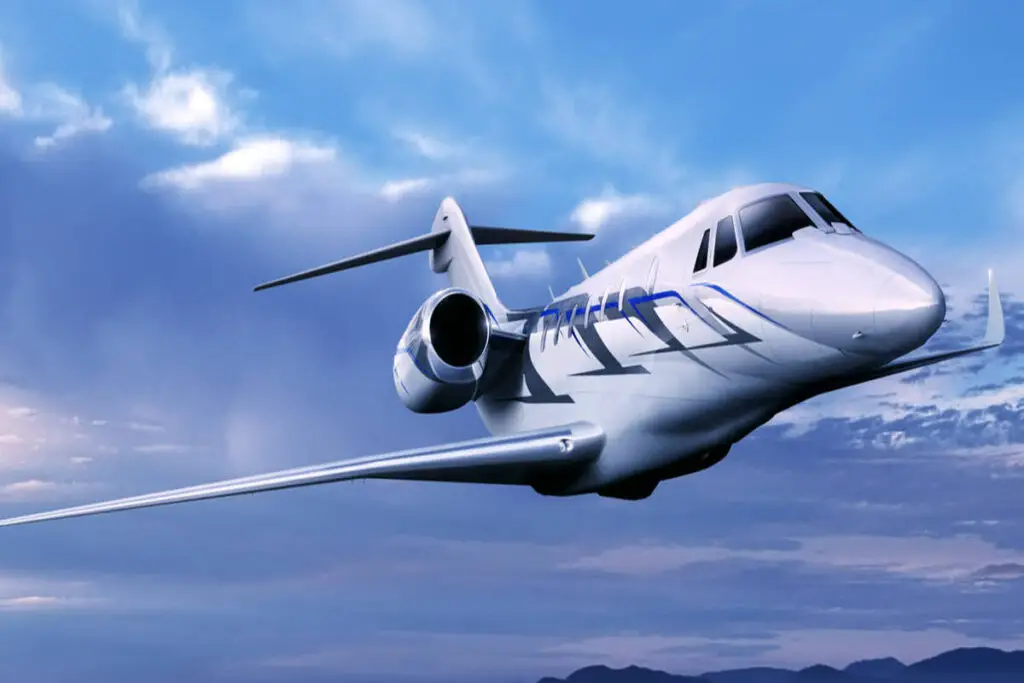
Time-Saving Advantages of Private Jet Cruising Altitude
Flying at higher altitudes in a private jet comes with some major time-saving advantages.
Let’s take a closer look at how cruising at these heights can make your journey faster and more efficient.
Shorter Flight Durations
When you fly at higher altitudes in a private jet, you can reach your destination in less time. How does this work?
Well, when you’re up in the sky, there are no traffic jams or congested roads to slow you down. The same goes for the airspace above.
By avoiding lower-altitude airspace that is often crowded with commercial flights, private jets can cruise smoothly and swiftly towards their destination.
Quicker Departures and Arrivals
One of the perks of flying at higher altitudes is that it allows for quicker departures and arrivals.
Unlike commercial flights that have to follow specific routes and schedules, private jets have more flexibility.
They can choose direct routing options that bypass congested areas and fly above commercial traffic levels.
This means they can take off sooner after arrival or land closer to their final destinations, reducing overall travel time.
Maximizing Productivity or Leisure Time
By opting for a private jet flying at higher altitudes, passengers have the opportunity to maximize their productivity or leisure time during their journey.
With shorter flight durations, they can spend less time traveling and more time focusing on important tasks or simply relaxing.
Whether it’s catching up on work emails, preparing for a business meeting, or enjoying some downtime with a book or movie, every minute counts when you’re on the move.
Comfort and Convenience
Another advantage of flying at higher altitudes in a private jet is the enhanced comfort and convenience it offers.
These jets are designed with passenger comfort in mind, providing spacious cabins equipped with luxurious amenities.
From plush seating arrangements to state-of-the-art entertainment systems, everything is tailored to ensure a pleasant and enjoyable journey.
Private jets often have compact designs that allow them to access smaller airports, which means you can get closer to your destination without the hassle of long drives or transfers.

Weather Avoidance Strategies for Private Jet Cruising Altitude
To ensure a safe and smooth journey, pilots of private jets must employ effective weather avoidance strategies while cruising at high altitudes.
By maintaining a high altitude, pilots can navigate around severe weather systems more effectively, minimizing the risks associated with bad weather.
Let’s explore some key strategies that help private jet pilots steer clear of adverse weather conditions.
Real-Time Weather Updates and Radar Systems
Private jet pilots have access to real-time weather updates and radar systems, which provide crucial information about current and upcoming weather patterns.
These tools allow pilots to proactively plan their routes, avoiding areas with unfavorable weather conditions.
By staying informed about the latest weather developments, pilots can make informed decisions regarding their flight paths.
Quick Climbing and Descending Abilities
One advantage of flying at high altitudes is the ability to quickly climb or descend when encountering adverse weather conditions.
If a pilot detects bad weather ahead, they can swiftly change their altitude to avoid it. This flexibility allows them to navigate around storms or turbulent areas efficiently.
Pilots can utilize this capability to find smoother airspaces or clearer skies during their journey.
Collaboration with Air Traffic Control
Private jet pilots maintain constant communication with air traffic control (ATC) throughout their flight.
When encountering challenging weather conditions, collaboration with ATC becomes crucial in finding alternative routes that steer clear of bad weather.
ATC can provide guidance on available airspace options or suggest alternate paths to avoid storms or other hazardous atmospheric conditions.
Proactive Route Planning
Effective route planning is essential for private jet pilots. By analyzing current and forecasted meteorological data, pilots can identify potential areas of concern along their planned route.
They can then adjust their flight path accordingly by deviating from these regions prone to severe storms or turbulence.

Private Jet Cruising Altitude Rapid Ascent vs. Commercial
Private jet cruising altitude offers a distinct advantage over commercial aircraft.
Let’s explore how this faster ascent benefits private jet passengers and contributes to a more efficient travel experience.
Rapid Ascent for Efficient Travel
Private jets have the capability to ascend rapidly to higher altitudes compared to commercial airliners.
While commercial planes often have gradual ascents due to passenger comfort considerations, private jets can quickly climb to their desired cruising altitude.
This rapid ascent allows private jet passengers to reach their destination more efficiently.
By minimizing the time spent ascending, private jets reduce overall travel time and provide a quicker journey for those on board.
Fuel Efficiency and Reduced Travel Time
One significant benefit of the rapid ascent in private jets is the reduction in fuel consumption.
When a plane ascends quickly, it requires less fuel compared to a gradual ascent commonly seen in commercial flights.
This fuel efficiency not only contributes to cost savings but also reduces the environmental impact of air travel.
Moreover, the reduced travel time resulting from faster ascents enhances convenience for private jet travelers.
Whether it’s for business or leisure purposes, reaching the desired cruising altitude promptly means less time spent in transit and more time at the destination.
Enhanced Comfort and Luxury
In addition to efficiency, rapid ascent provides an enhanced level of comfort and luxury for private jet passengers.
Unlike commercial flights where passengers may experience discomfort during prolonged periods of climbing.
Private jets offer a smoother and more seamless transition as they quickly ascend to cruising altitude.
Furthermore, with fewer passengers on board, private jets can cater to individual preferences and provide personalized services that enhance the overall flying experience.
From customized meals and beverages to spacious seating arrangements, these luxurious amenities make traveling by private jet all the more enjoyable.
Flexibility in Route Planning
The ability of private jets to rapidly ascend also grants greater flexibility in route planning.
Commercial airlines often follow predetermined flight paths and altitudes due to air traffic control regulations and congestion.
However, private jets have more freedom to choose optimal routes and altitudes, avoiding congested airspaces and adverse weather conditions.
This flexibility allows private jet operators to provide a more seamless and efficient travel experience for their passengers.
It ensures that flights can be tailored to specific needs, optimizing both time and comfort during the journey.
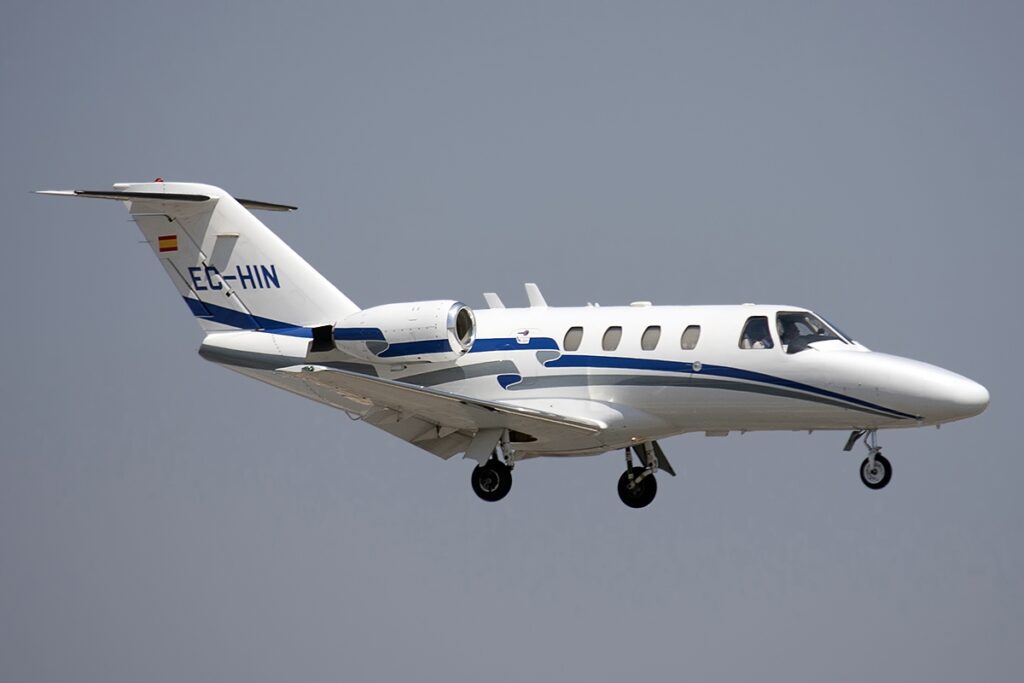
Significance of Private Jet Cruising Altitude
Choosing the right cruising altitude is crucial for optimizing flight efficiency and performance.
It plays a significant role in ensuring a smooth, comfortable, and enjoyable flying experience.
Let’s explore why private jet cruising altitude holds such importance.
Flight Efficiency and Performance
Selecting the optimal cruising altitude is essential for maximizing flight efficiency.
Higher altitudes offer several advantages that contribute to improved performance:
- Reduced Air Traffic: Flying at higher altitudes allows private jets to avoid congested airspaces, resulting in shorter flight times and fewer delays.
- Tailwinds: At higher altitudes, pilots can take advantage of stronger tailwinds that propel the aircraft forward, increasing speed and reducing fuel consumption.
- Optimal Fuel Burn: Private jets are designed to operate efficiently at specific altitudes. By choosing the right cruising altitude, pilots can achieve optimal fuel burn rates, leading to cost savings.
Enhanced Comfort and Experience
Private jet travel offers a level of luxury and comfort that sets it apart from commercial flights.
The ability to fly at higher altitudes contributes significantly to this enhanced experience:
- Smoother Ride: As private jets ascend to higher altitudes, they encounter fewer weather disturbances such as turbulence. This results in a smoother ride for passengers, minimizing discomfort during the journey.
- Quieter Cabin Environment: Flying at higher altitudes means being farther away from ground noise sources like traffic or urban areas. This leads to a quieter cabin environment where passengers can relax or conduct business without distractions.
- Better Views: Private jets often cruise above clouds at high altitudes, providing breathtaking panoramic views of the landscape below. Passengers can enjoy stunning vistas and capture memorable moments during their journey.
Distinction from Commercial Flights
The ability to fly at higher altitudes distinguishes private jet travel from commercial flights:
- Flexibility: Commercial airliners primarily operate at lower altitudes due to air traffic congestion and the need to maintain separation between aircraft. In contrast, private jets have more flexibility in choosing their cruising altitude, enabling them to optimize their flight path.
- Direct Routes: Private jets can often fly direct routes at higher altitudes, avoiding multiple stops or layovers that are common in commercial travel. This allows passengers to reach their destinations faster and with greater convenience.
Cost Savings and Passenger Satisfaction
Optimal cruising altitude selection not only enhances the overall flying experience but also contributes to cost savings:
- Fuel Efficiency: Flying at the right altitude ensures optimal fuel burn rates, reducing fuel consumption and associated costs.
- Time Savings: By flying at higher altitudes, private jets can take advantage of tailwinds and more direct routes, resulting in shorter flight times. This translates into time savings for passengers.
- Passenger Comfort: A smoother ride and quieter cabin environment contribute to increased passenger satisfaction. Private jet travelers value these aspects of the journey, making it a preferred choice for those seeking comfort and convenience.

Conclusion
Now that we have explored the benefits, comparisons, and strategies surrounding private jet cruising altitude.
It’s clear why this aspect holds such significance in the world of aviation.
Flying at higher altitudes not only provides a smoother and more comfortable travel experience but also offers time-saving advantages.
Imagine soaring above turbulent weather conditions, effortlessly gliding towards your destination while commercial flights are hindered by storms below.
It’s like having a VIP pass to the skies, where you can reach your desired location faster and with fewer disruptions.
So, if you’re someone who values efficiency, comfort, and flexibility in air travel, considering private jet cruising altitude is crucial.
By flying at higher altitudes, you’ll not only enjoy a seamless journey but also maximize your precious time.
Say goodbye to long layovers and tedious delays – embrace the freedom of traveling on your own terms.
FAQs
1. What is the average cruising altitude for private jets?
Private jets typically cruise at altitudes ranging from 41,000 to 51,000 feet. This allows them to avoid congested airspace and inclement weather conditions while benefiting from smoother air currents.
2. How does flying at higher altitudes save time?
Flying at higher altitudes enables private jets to take advantage of stronger tailwinds and more direct routes. These factors contribute to reduced flight times compared to commercial airlines.
3. Are there any safety concerns with flying at higher altitudes?
Private jets are designed and equipped to handle high-altitude flights safely. They undergo rigorous maintenance checks and adhere to stringent safety regulations set by aviation authorities.
4. Can private jets fly above bad weather?
Yes! Flying at higher altitudes allows private jets to navigate above turbulent weather systems such as thunderstorms or heavy precipitation. This ensures a smoother ride for passengers.
5. Are there limitations on how high private jets can fly?
While most private jets can reach altitudes above 50,000 feet, the maximum cruising altitude may vary depending on the specific aircraft model and its capabilities. It’s best to consult with your aviation provider for precise information.

